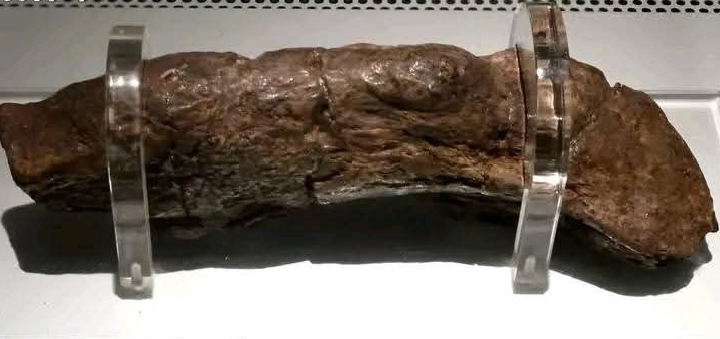The Viking Poop That Changed History: The Largest Human Excrement Ever Found!
By Jude Obuseh
History often surprises us with the most unexpected discoveries. In 1972, during an excavation in an ancient Viking settlement in York, England, archaeologists unearthed an object that would later be recognized as one of the strangest and most valuable finds in Viking history. However, this was not a treasure of gold, weapons, or ancient artifacts—it was a massive, fossilized piece of human excrement.
The Lloyds Bank Coprolite: A Unique Archaeological Find
This extraordinary discovery, now famously known as the Lloyds Bank Coprolite, was found at the site of what is now a Lloyds Bank branch in York. Measuring 20 centimeters (8 inches) in length and 5 centimeters (2 inches) in width, it holds the record as the largest known human feces ever discovered. Even more remarkable is its age, estimated to be around 1,200 years old, dating back to the 9th century when Vikings inhabited the region.
What the Viking Poop Reveals About Ancient Life
Scientific analysis of the fossilized stool has provided valuable insights into Viking health, diet, and daily life. Researchers discovered that the individual who produced it had a diet primarily consisting of meat and bread, confirming what is already known about Viking food habits. However, the examination also revealed that the person suffered from significant intestinal infections, as the sample contained traces of parasite eggs. This suggests that poor hygiene and unsanitary living conditions were common during that period, which likely contributed to widespread health problems among the Viking population.
A Window Into the Past
While it may seem like an unusual and even humorous discovery, the Lloyds Bank Coprolite offers a unique glimpse into the lives of people who lived over a millennium ago. The study of ancient human waste, known as coprolite analysis, helps archaeologists understand not only what people ate but also the diseases they suffered from and how their environment affected their health. It provides a tangible link to the everyday struggles of past civilizations, making history feel more real and relatable.
Where to See This Unusual Discovery
Today, the Lloyds Bank Coprolite is displayed at the JORVIK Viking Centre in York, where it has become a popular attraction for visitors interested in Viking history. Despite its unusual nature, this artifact continues to be an essential piece of evidence in the study of ancient life, proving that even the most unexpected discoveries can contribute significantly to our understanding of history.
Read Also: The 18-Foot King Cobra Killed in World War II: A Deadly Encounter in the Jungle
The Significance of the Discovery
This finding is a reminder that history is not just about battles, kings, and grand monuments. Everyday objects, even those as unremarkable as human waste, can provide extraordinary insights into how people lived, what they ate, and the challenges they faced. By studying such discoveries, archaeologists and historians can paint a more detailed picture of ancient societies, helping us appreciate the complexity of human history.
Would you visit the Viking poop exhibit? Let us know your thoughts.
Read Also: NEW BOOK: MASTER YOUR MIND: HOW TO BECOME WHAT YOU THINK! 🧠




Comments
Post a Comment